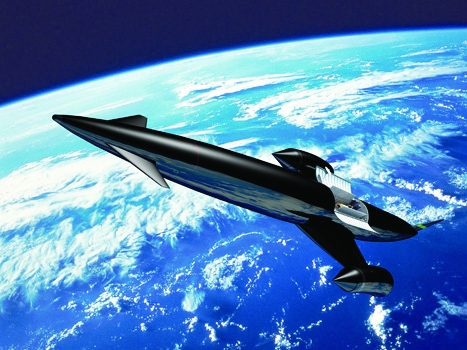We’re getting a statue of Yuri Gagarin not far from The Engineer’s offices. To mark the 50th anniversary of the first Cosmonaut’s flight, the Russian space agency, Roscosmos, is donating a copy of a statue that stands in Gagarin’s home town to the UK, where the 3.5m high chunk of Socialist-Realist zinc will take up its position near Admiralty Arch, spacesuit-clad and arm outstretched towards the statue of another great explorer, James Cook.
I’m never quite sure about such statues; Gagarin was undoubtedly a significant figure but the UK’s involvement in his achievement (and that of the engineers who put him into orbit) was non-existent. But then, I always wonder about the statues of Abraham Lincoln and Nelson Mandela in Parliament Square as well.
However, the event does have some resonance in the first week of the UK Space Agency’s existence as a full executive agency of the Department of Business, Innovation and Skills. Its launch was accompanied by an announcement of a £10million grant to start a national space technology programme, a reduction in regulations on satellite operators, and a study of the regulations that might be needed for space tourism operators to launch from the UK.
Of course, the modest government support of the UKSA pales into pathetic insignificance next to the munificent French government’s €500million (£440million) handout for space research, which will secure France’s place in the lead of the project to develop a successor to the Ariane 5 rocket. The developers of Britain’s own proposed spaceplane, Reaction Engine’s Skylon, must surely be envying their colleagues across the Channel right now. However, it is an acknowledgement of the importance of the space sector to the UK economy, both as a source of employment and a generator of technology and income — the sector is worth some £7.5billion per year to the economy — and when so many organisations are being deprived of public funds at the moment, it doesn’t do to complain. Not if you’re British, anyway.
The UK point of view is that the new European rockets will carry British instruments to provide lucrative services in telecommunications and valuable insights in scientific discovery. But it doesn’t exactly capture the imagination. In our current issue, we’re featuring another space-related project which is all about enthusing people: the rocket-propelled land speed record contenderBloodhound SSC, whose project director, Richard Noble, talks about the uplift in numbers of physics and engineering graduates inspired by the Apollo programme. The clever satellites and probes designed by UK firms might be inspiring to people already studying for degrees — and we wouldn’t for a moment belittle their contribution — but they’re unlikely to get many 13-year-olds excited.

Seeing the statue of Gagarin, and the spirit of exploration, adventure and risk he embodied, it’s difficult not to get a little wistful about the UK’s space industry. The moves to open up the UK for space tourism give us a little glimpse into what could be. It’s been suggested that RAF Lossiemouth could form a perfect spaceport for space planes, providing a long flightpath over the North Sea (although the BBC thought that was so unlikely it mistook the story for an April Fool); imagine, for a moment, the graceful power of a Skylon space plane streaking along the runway with the majestic peaks of the Cairngorms as a backdrop. Now that’d get the kids lining up for engineering courses, wouldn’t it? And it’d be a better site for a statue of Yuri Gagarin, as well.
As it happens, The Engineer did mention Gagarin at the time of his orbit. Digging back through our archive, I found this short item at the front of the 14 April, 1961 issue:
MAN IN ORBIT
As we go to press we learn that the Russians have achieved another remarkable ’first’ in space. Last Wednesday morning, Mr Tovarich Gagarin was launched in a sealed capsule by rocket into an orbit that took him around the world in 108 minutes. The capsule was brought safely back to the earth’s surface. We look forward to learning in the next few days about the capsule and its launching rocket. Congratulations to the Russians!
You can tell the editors of the day were in a rush. Tovarich isn’t a previously-unknown name for Major Gagarin; it’s Russian for Comrade. We did make up for it with an exhaustive feature in the following issue, containing the following passage, unusually lyrical for The Engineer at the time:
In a pitch-black sky, the stars looked brighter and clearer than from the earth. The earth had a very beautiful pale-blue halo. On the horizon the colours changed from a delicate light blue through ultramarine, dark blue and violet, and finally to a black sky. When emerging from the shadow, a vivid orange flash, which then passed through all the colours of the rainbow, could be observed on the horizon.
Major Yuri Alexeyevich Gagarin died when an aircraft he was piloting crashed in March 1968. As deputy training director of the Soviet Union’s cosmonaut programme, he was in the process of requalifying as a jet pilot.











Water Sector Talent Exodus Could Cripple The Sector
Well let´s do a little experiment. My last (10.4.25) half-yearly water/waste water bill from Severn Trent was £98.29. How much does not-for-profit Dŵr...